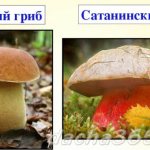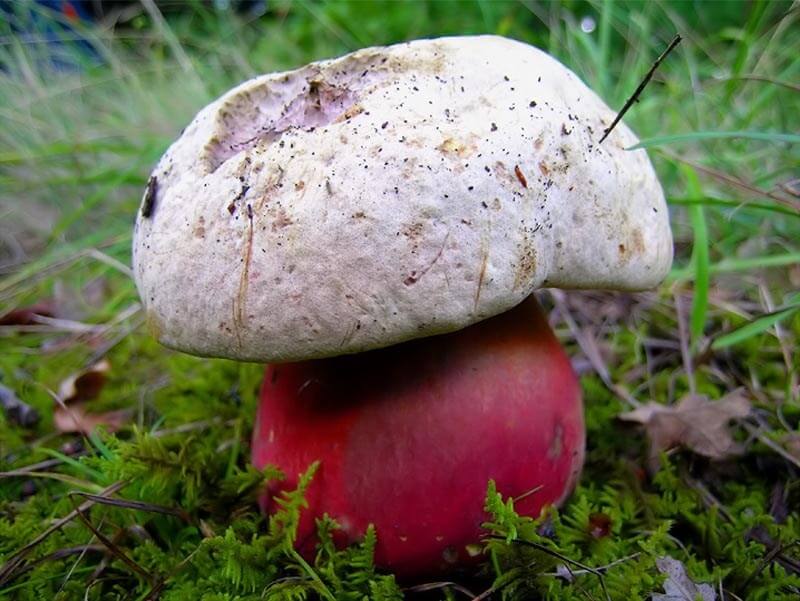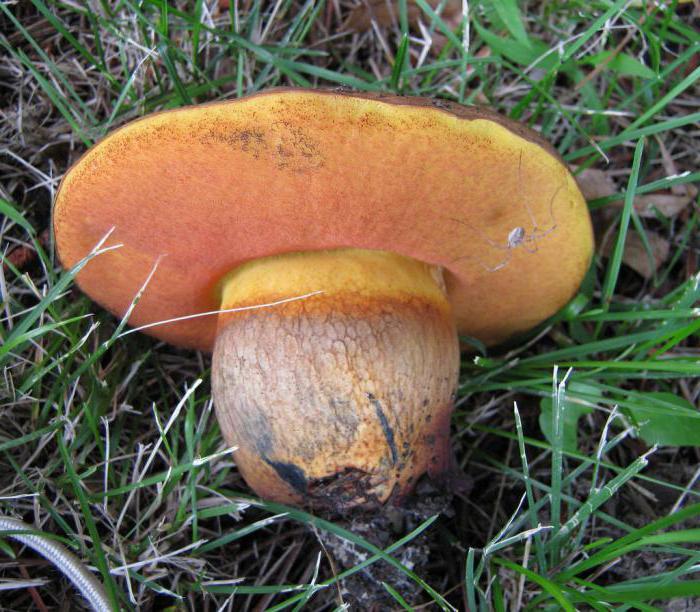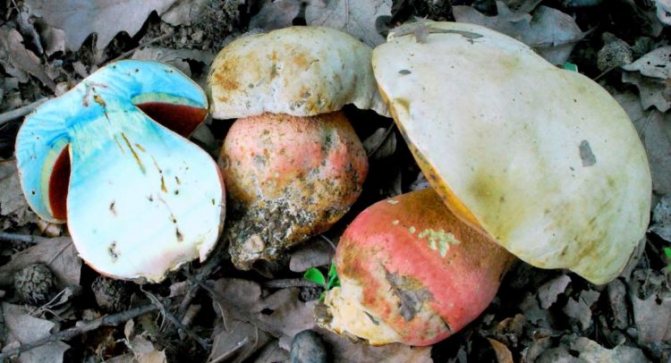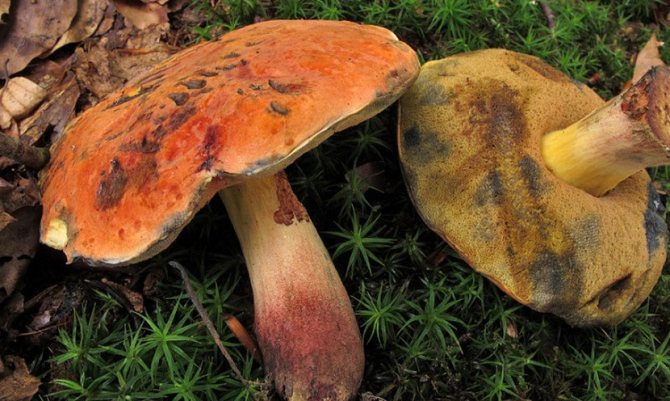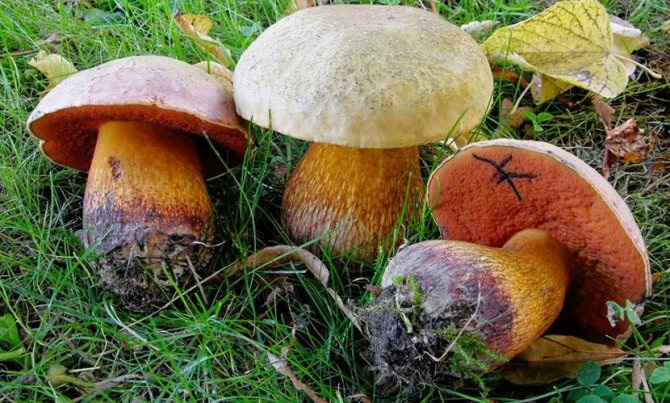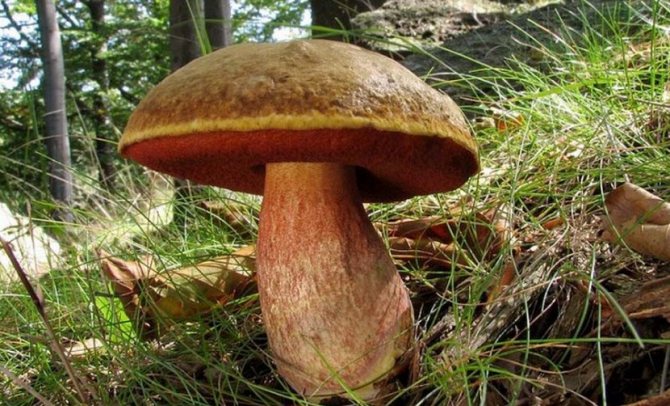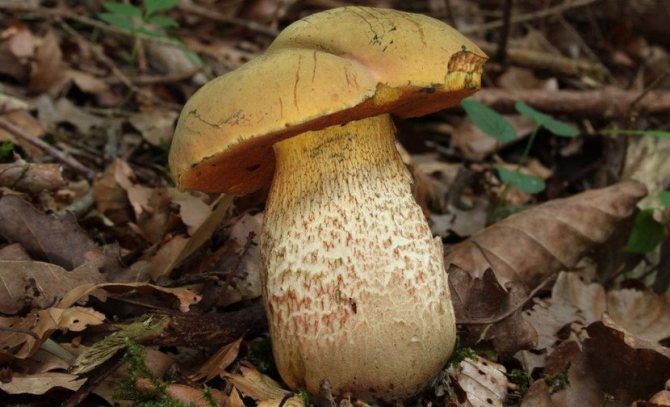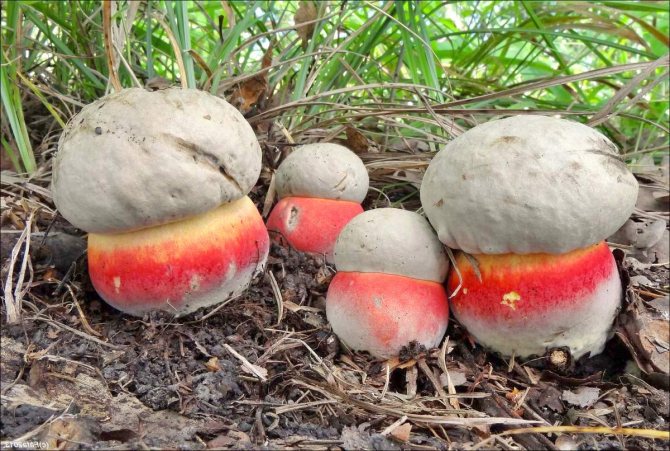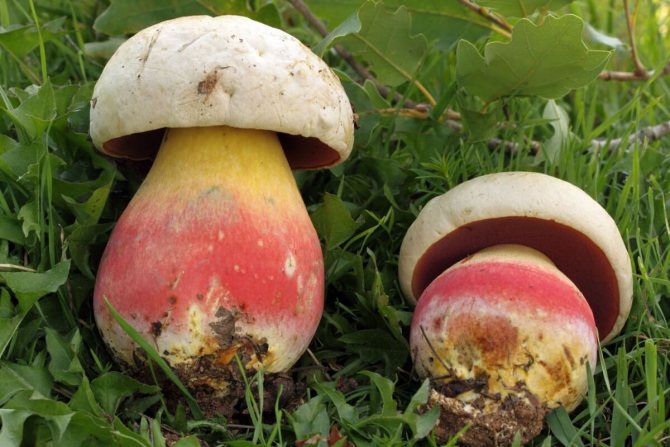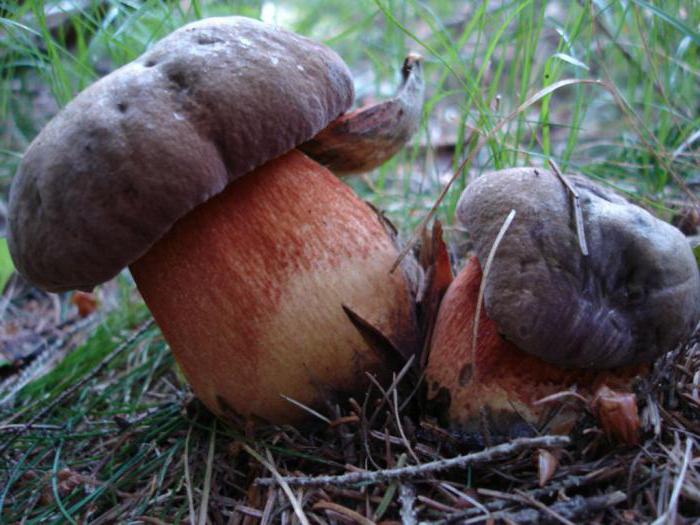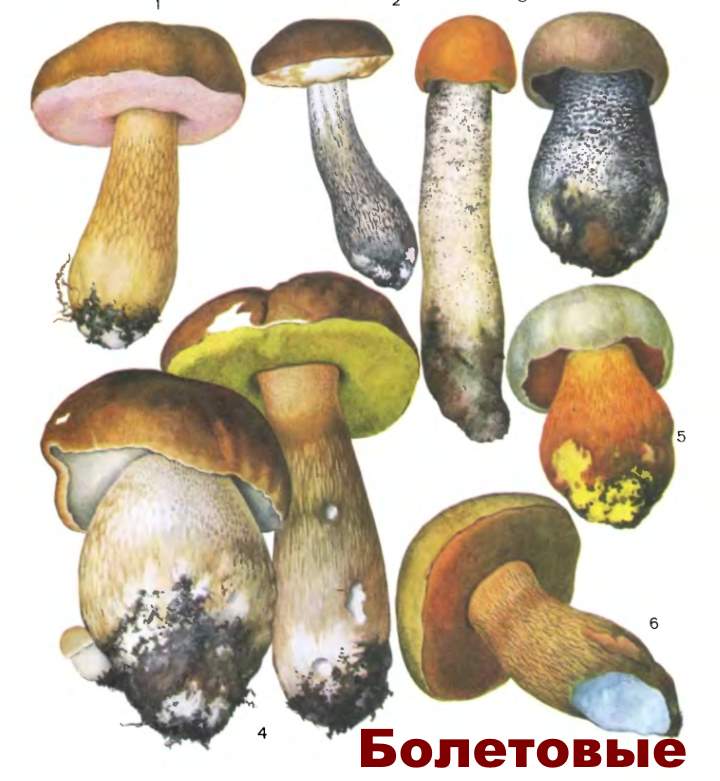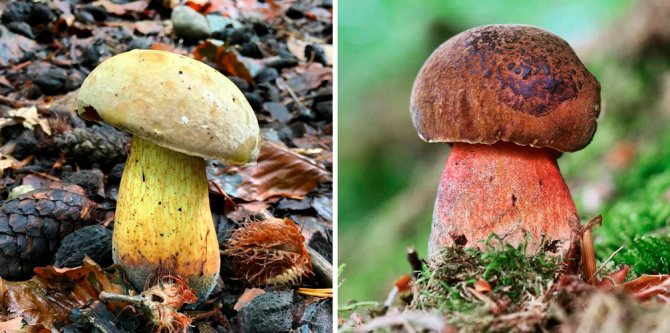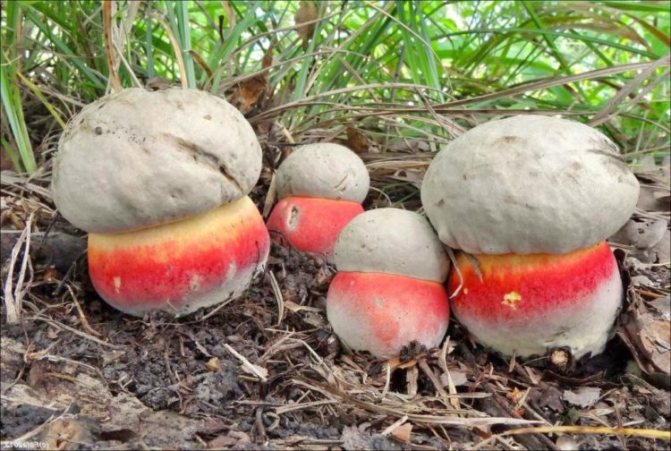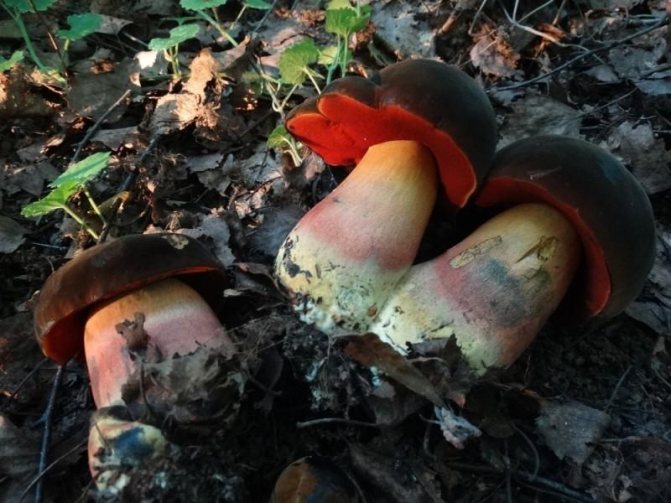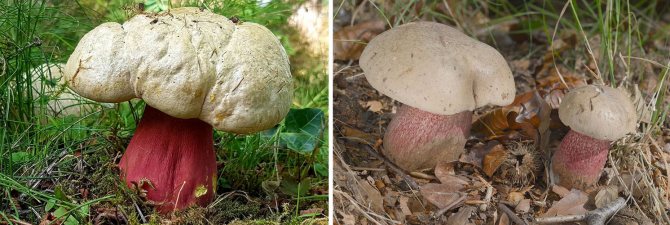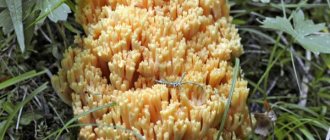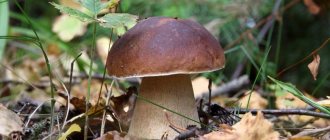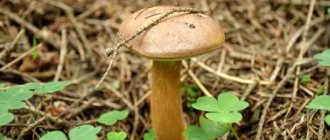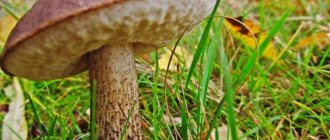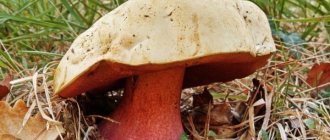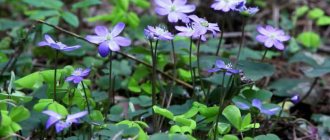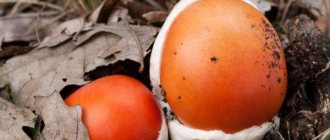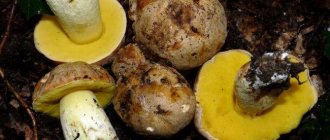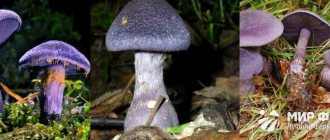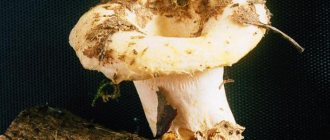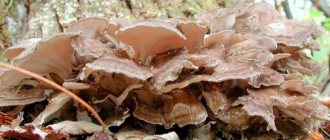How to distinguish a satanic mushroom
What does a satanic mushroom look like? To find a "partisan" in a mushroom basket, you need to know well what he looks like. It has distinctive features:
- The young mushroom has a pillow-like cap that has rounded bumps.
- In the old model, the cap is flatter, it can reach 30-40 cm.
- In the shade, the cap can be dirty gray or olive-gray, brown in the light, like a boletus.
- If it is dry outside, the surface will be smooth and dry. If wet - mucous.
- Tubular layer with fine pores, dense.
- The tubules can be yellow and yellow-olive, the pores are red. Turns blue when pressed.
- The leg is the same as that of the boletus, with a massive base and a reduction to the cap. The main difference is its color. It is yellow-red under the cap, the middle can be brick-red or dark red, the base is brown. A mesh pattern can be traced. If you cut it, then immediately a blue tint appears, and then a red one.
Important! Some edible mushrooms, such as boletus, also turn blue when cut or broken. But they do not have reddening pulp. This should be alarming.
But the leg of the satanic mushroom does not always have such a bright color, it can be gray-brown, like the hat. The red tint is well traced at the pores around the leg. There are no pronounced red or blue flowers on the cut, the light pulp slowly acquires a cloudy brown tint.
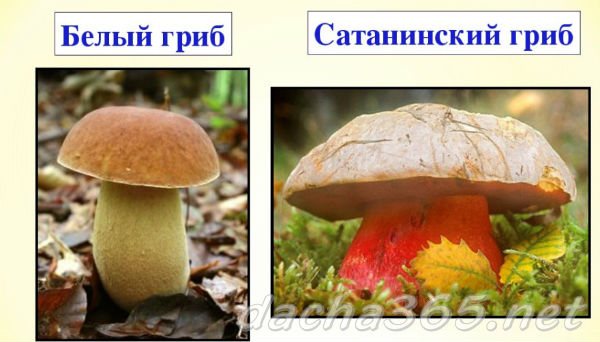
There is one more important contrast satanic mushroom - smell. It is especially characteristic of old specimens. It smells like rotten onions, carrion and sour foods. Young representatives of this species may have a slight mushroom smell. Therefore, having met an adult and smelly specimen, you should remember how it looks. The same beautiful young mushroom can then also be identified.
Description
The satanic mushroom (Boletus satanas) belongs to the Boletov family, the Borovik family, it can also be called the devil's mushroom, is poisonous (some sources indicate that it is conditionally edible).
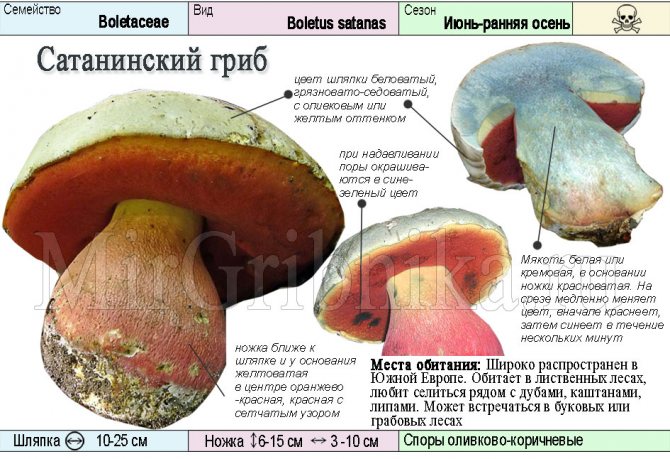

- Differs in large size. The cap has a hemispherical shape, dry and velvety to the touch, with a diameter of 10 to 25 cm. The color of the cap is whitish, dirty grayish, with an olive or yellow tint. May have pale green, yellow-pink streaks.
- On the inside, the cap is spongy. In a young mushroom, the tubules are yellowish, later greenish-yellow. The pores are small, initially yellowish, with age they turn orange, red, reddish-brown, when pressed, they turn blue-green.
- The flesh is pleasant in appearance, white or creamy, and reddish in the area of the leg. On the cut, it slowly changes color, at first it turns red, then turns blue within a few minutes.
- The structure of the leg is characteristic of the classic boletus: massive, barrel-shaped, tapering towards the cap. Its height can reach from 6 to 15 cm, and its thickness is from 3 to 10 cm. The color in the upper part of the leg, closer to the cap, and at the base, is yellowish, in the middle part it is red or orange-red with a mesh pattern.
The debate about whether the satanic mushroom is edible or not continues to this day. In its raw state, even a small piece can cause serious harm to the body. But at the same time, the toxin contained in the pulp decomposes under the influence of temperature. On this basis, some experts classify the imp as conditionally edible.True, to neutralize the toxin, you must first soak, and then boil the "crop" for 10 hours. And to say for sure what percentage of toxicity remained after treatment can only be done after laboratory analysis (therefore, it is better not to risk it).
Where grows
You need to understand where the satanic mushroom is more likely to be found in order to be vigilant. He does not like the cold, therefore it grows most often in the south of Europe, Primorye, Asia and the Caucasus. Even the Moscow or Kaluga region is already cold for him, so in these regions he can be found very rarely. Satanic grows sick from the end of June to the end of September.
The favorite soil of this mushroom is calcareous. They love places with good sunshine in a deciduous forest. This mushroom is not found in coniferous plantings. Trees, near which you can find a sick satanic, in the middle lane almost do not grow in the wild:
- beech,
- hornbeam,
- oak,
- hazel,
- Linden;
- edible chestnut.
Spread
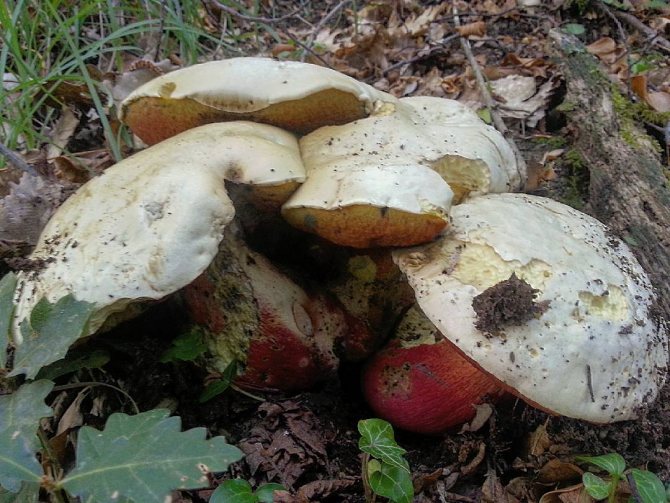

The satanic mushroom prefers a warm climate. Therefore, it is widespread in the southern and southern European part of the Russian territory, in the Caucasus, in the countries of the Middle East and in Primorye. The fungus grows mainly on calcareous soils, carries out mycorrhiza formation with deciduous tree species.
The fruiting period is from early summer to early autumn.
Differences from Dubovik
Inexperienced mushroom pickers can confuse Satanic sick with other representatives of the Boletov family. Here is which of the conditionally edible representatives it is similar to:
- the oak tree is olive-brown, the difference is the high hat, brown;
- speckled oak tree, the difference is that there is no pronounced mesh on the leg.
Of the inedible relatives, similarities with such mushrooms:
- white boletus;
- inedible boletus;
- pink-golden boletus;
- legal boletus or de Gaulle;
- false satanic mushroom.
This list can be supplemented by other boletus species that are not fully understood.
Interesting! Boletus is sexually distinct. He has males and females, their DNA is similar to the sex chromosomes of a person.
Watch the video! An edible oak tree or a poisonous satanic mushroom?
Similar species
In order not to put poisonous or inedible forest "inhabitants" into the basket, you need to pay attention to external signs. It is recommended to carefully review the harvest upon arrival.
Borovik le Gal
Poisonous representative of the genus le Gal, named after the famous microbiologist. The mushroom cap is orange-pink in color. In a young state, the upper part is convex, after a few days it becomes flat. The surface is smooth and even. The diameter of the cap is 5-10 cm. The height of the leg is 7-15 cm. The lower part is quite thick, the size in the section is 2-5 cm. The shade of the leg is identical to the cap.
Boletus le Gal grows mainly in Europe. They are rare in Russia. They prefer deciduous forests, alkaline soils. Form mycosis with oak, beech. Appear in summer or early fall.
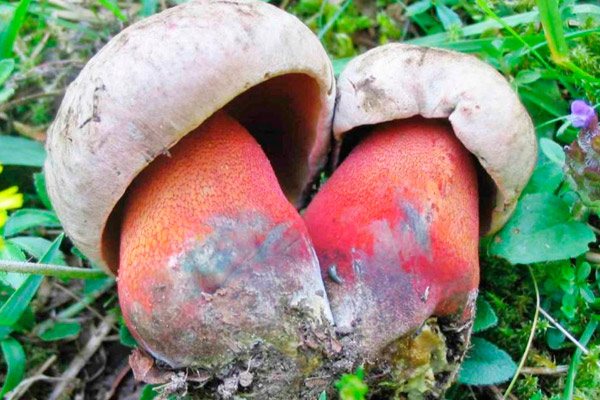

Satanic mushroom
This variety is considered poisonous. The maximum cap size is 20 cm in diameter. The color is ocher-white or gray. The shape is hemispherical. The top layer is dry. The pulp is fleshy. The leg grows upwards by 10 cm. The thickness is 3-5 cm. The color of the lower part of the satanic mushroom is yellow with a reddish mesh.
The smell emanating from the old specimen is unpleasant, pungent. Often found in deciduous thickets. Prefers to settle in oak plantations, on limestone soils. Can create mycosis with any kind of tree. Distributed in Europe, the Middle East, Russia. Fruiting period June-September.
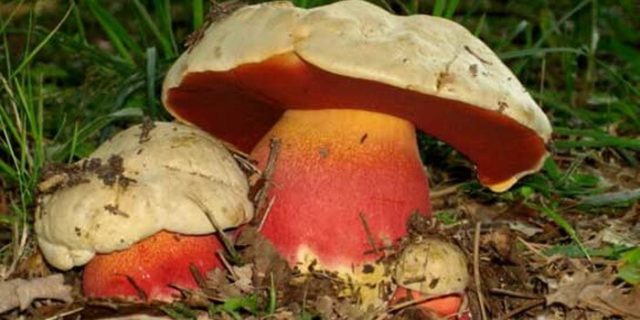

White mushroom
An edible and delicious forest dweller. It looks like a regular keg, but it can change during the growth process. Leg height 25 cm, thickness 10 cm. Fleshy hat. Diameter 25-30 cm. The surface is wrinkled.If the porcini mushroom grows in a dry environment, the top film will be dry, in wet conditions it will be sticky. The color of the upper part is brown, light brown, white. The older the specimen, the darker the color of the cap.
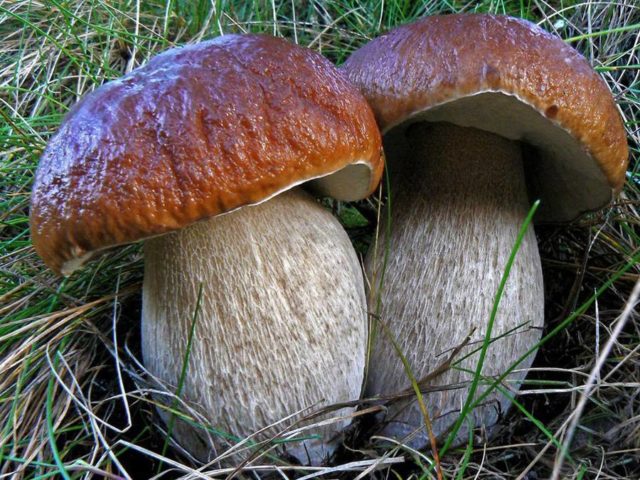

Satanic Mushroom Edible Or Not
Is it possible to eat a satanic mushroom, the answer to this question is most often negative. But in some places they say that it is conditionally edible. But to eat it, you need to soak it well and boil it for 10 hours. It is absolutely impossible to add it raw to salads.
In France and the Czech Republic, there are certain rules according to which you can pick these mushrooms, and you need to know how to cook it for further use in food.
In Italy, this species is considered inedible and is strictly prohibited for consumption and even for collection.
According to WHO, 10 grams of satanic mushroom pulp can be fatal even for a healthy adult. When poisoning with this fungus, the digestive system is affected, the nervous system is paralyzed and the heart can stop. Of course, everyone can decide for himself whether to eat this mushroom, but you should not risk your health.
Edibility and taste
All of the above types of oak trees are edible. But they are not used raw. Beforehand, it is imperative to carry out cleaning and heat treatment. First, the mushrooms are freed from dirt. Then peel off the cap. It is easily detached by prying on one side with a knife and pulling. The leg just needs to be scraped with a knife, removing the top layer of the skin.
Learn also about growing mushrooms in a greenhouse.
Then the fruits are washed well under running water. Put in a saucepan, pour over with water, add a whole onion. Boil for 30 minutes. After that, the broth is drained and the manipulation is repeated again. Boiled mushrooms are discarded in a colander. They wait until they drain, grind at their discretion. Then it is fried in butter with onions and seasoned with sour cream.
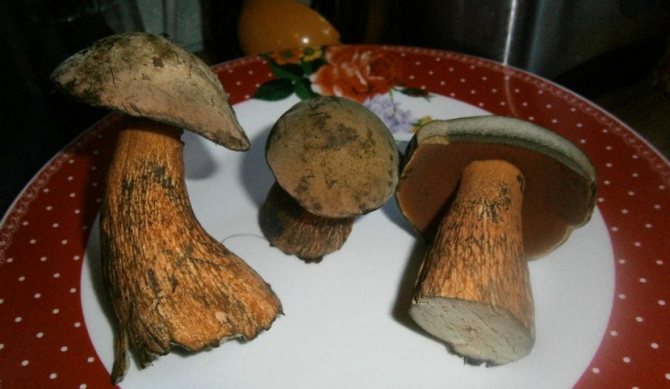

The product in question can be added to soups, made sauces, marinades on its basis. The finished oak wood has a pleasant taste, slightly reminiscent of tender meat. Dried oak wood is also widely used in cooking as a seasoning.
Did you know? A tinder fungus growing on tree trunks can live for about 80 years.
Signs of poisoning
Most often, the first signs appear after a couple of hours - these are vomiting and nausea. You should immediately call an ambulance at the first sign. While waiting for the doctor, the victim should rinse the stomach with a solution of soda, in a proportion of 2 tsp. for 1 liter of water. With a long wait for help, the patient's condition worsens.
Common signs of poisoning:
- increased body temperature;
- delirium;
- hallucinations;
- persistent vomiting;
- severe abdominal pain;
- bloody diarrhea;
- headache;
- paralysis of the limbs.
You should be careful and remember that all inedible types of mushrooms are dangerous. In case of signs of poisoning, you must immediately call an ambulance. In this way, health and life can be preserved.
Watch the video! Satanic mushroom. Be careful!!!
Reproduction
Propagated by small fusiform spores that form on the inner side of the tubule walls.
():
If you want to see the disputes of this representative of the sick - put the mushroom cap on a sheet of white paper and after 1-2 days removing it you will see the spore powder and you will be able to examine the pattern of the arrangement of the tubes with a magnifying glass (this can be done with any cap mushroom that has a typical cap) ...
The color of the spore powder is yellow-brown, sometimes with an olive tint.
Growing places
The geography of distribution covers deciduous forests, where oaks, beeches, hornbeams, chestnuts, lindens and hazel grow, with which the satanic pain enters into a symbiotic association - mycorrhiza. This means that this species belongs to the group of mycorrhiza formers. More often found on soil rich in limestone.
The growing area includes the southern part of the European regions of Russia, Primorsky Krai, the Mediterranean countries of southern Europe, the Caucasus region and the Middle East.
The main fruiting occurs in summer-autumn, it grows from June to September.

